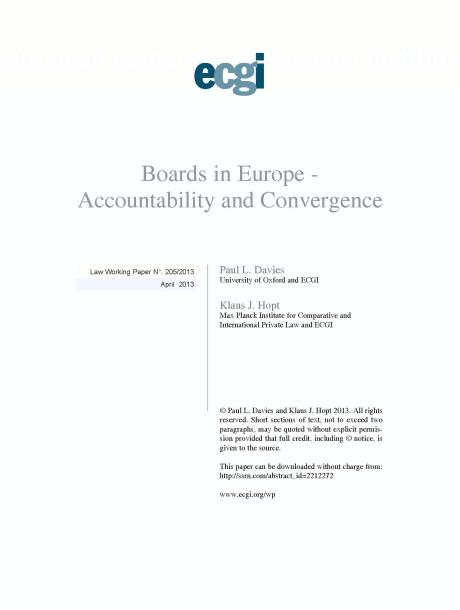
Boards in Europe - Accountability and Convergence
Abstract
Corporate boards play a central role in corporate governance and therefore are regulated in the corporate law and corporate governance codes of all industrialized countries. Yet while there is a common core of rules on the boards, considerable differences remain, not only in detail, but sometimes also as to main issues. These differences depend partly on shareholder structure (dispersed or blockholding), partly on path dependent historical, political and social developments, especially employee representation on the board. More recently, in particular with the rise of the international corporate governance code movement there is a clear tendency towards convergence, at least in terms of the formal provisions of the codes. This article analyses the corporate boards, their regulation in law and codes and their actual functioning in nine European countries (Belgium, France, Germany, Italy, the Netherlands, Poland, Sweden, Switzerland and the United Kingdom) in a functional and comparative method. Issues dealt with are inter alia board structure, composition and functioning (one tier v. two tier, independent directors, expertise and diversity, separating the chair and the CEO functions, information streams, committees, voting and employee representation) and enforcement by liability rules (in particular conflicts of interest), incentive structures (remuneration) and shareholder activism. The article finds convergence in these European countries due to the pressures of competition, a pro-shareholder change supported by government and institutional investors and, to a certain degree, the impact of the EU. This convergence shows more in the codes and the ensuing practice than in the statutes. On the other side considerable differences remain, in particular as a result of the failure to adopt a mandatory "no frustration" rule for takeovers at EU level and diverging systems of labor codetermination. The result is an unstable balance between convergence and divergence, shareholder and stakeholder influence and European v. national rulemaking.







